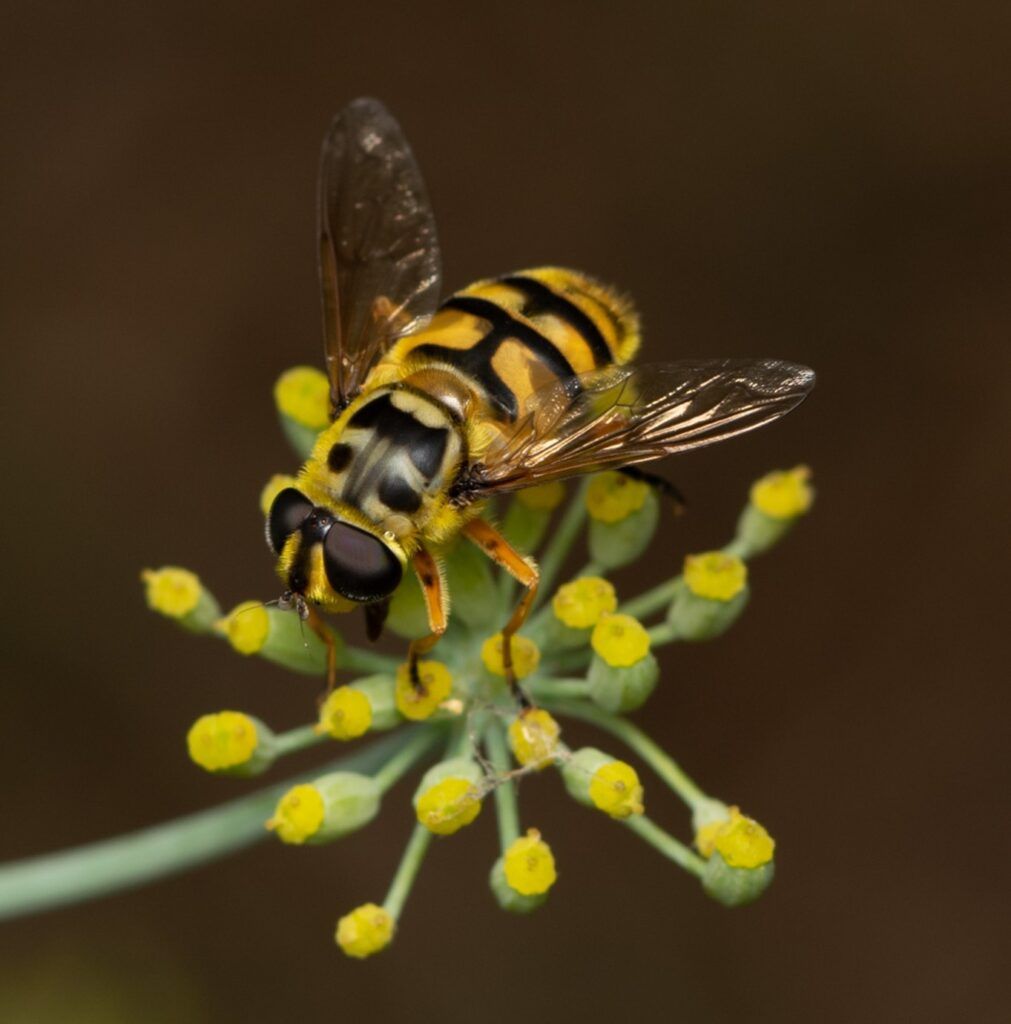Can counting flies tell us how effective rewilding efforts are?

PTES Intern Adhi is looking into how Diptera can be key in assessing the ecological health of an area and how it can change over time.
Diptera, or true flies, are some of the most common insects around the world. And yet this highly diverse group, distinguished by their reduced hindwings, called halteres, is also one of the most neglected. There are currently 7,247 known species from 108 different families just in the UK. A UK-wide review in 2016, Looking at the 36 families of Acalyptratae flies, found that 64 species were listed as data deficient. That means we have almost no information about where they’re found throughout the UK, whether they’re doing well or at threat from extinction. Other groups, such as butterflies and bumblebees, get much more attention.
This neglect is worrying. Flies play a really important role in our ecosystem, they’re critical for pollination, enable floral diversification and help us understand how species can evolve. Fly larvae are important too. Living in soil, rotting wood, plant and animal tissues, fungi, dung, and water, Diptera larvae can be detritivores, parasites and even predators. They’re also prey for many animals including birds and other insects. As a result, flies are a useful ecological indicator of the health of an ecosystem.
How are flies being used in rewilding projects?
Flies can help us track the success or failure of schemes such as rewilding projects. Our new intern, Adhiyan Jeevathol, is visiting one of these rewilding schemes to study Diptera at the site before restoration work takes place. Tolworth Court Farm Fields in Kingston, Southwest London, covers 42 hectares. Sitting adjacent to the Hogsmill Valley green corridor, it’s the borough’s largest green space, made up of fields, and surrounded by a network of mature and ancient native hedgerows, with plenty of blackthorn. Tolworth is being turned into an urban, mixed mosaic, nature reserve where natural processes will create a dynamic landscape, supporting diverse and abundant wildlife.
To track the success of the project, Adhi needs to collect baseline data on Diptera species living here. At the moment we don’t know what Diptera species are on site, despite flies making up a quarter of all invertebrate records collected there since 2022.
Setting up fly traps
Adhi will work with Zoe Jay Adams, a Diptera curator at the Natural History Museum, and Elliot Newton, co-founder of Citizen Zoo. Adhi’s going to set up a variety of traps to collect specimens, including a Malaise trap. This looks like a black tent and is great for collecting flying insects. The animals fly to the top and drop into a small container. Adhi will set the trap and collect samples every month. He’s also use yellow pan-traps, pit-fall traps and sweep netting, ensuring he collects as many different species as possible. The best, and the worst thing about Malaise traps is how many insects they can collect! So, the main challenge facing Adhi will be the amount of material he’ll collect and must identify.
Adhi will take the Diptera specimens to the Natural History Museum for identification. If he has any tricky samples, he’ll call on experts on the Dipterists Forum for help. This huge dataset will be critical in helping the team explore the impacts of the conservation work at Tolworth. Watching how a mega-diverse order responds to rewilding is really important, and watching for changes closely means the team managing the site can adapt their management if and when needed. There have been few attempts at rewilding within greater London and even fewer attempts to try this approach on such a small site.
We’re excited to see how Adhi’s study will help demonstrate how Diptera can be key in assessing the ecological health of an area and how it can change over time in response to natural processes and rewilding principles which can then be adopted more widely on smaller and more urban sites.
This project is only possible thanks to our generous donors. Can you help by donating today?
Header image credit Gary Barnes



